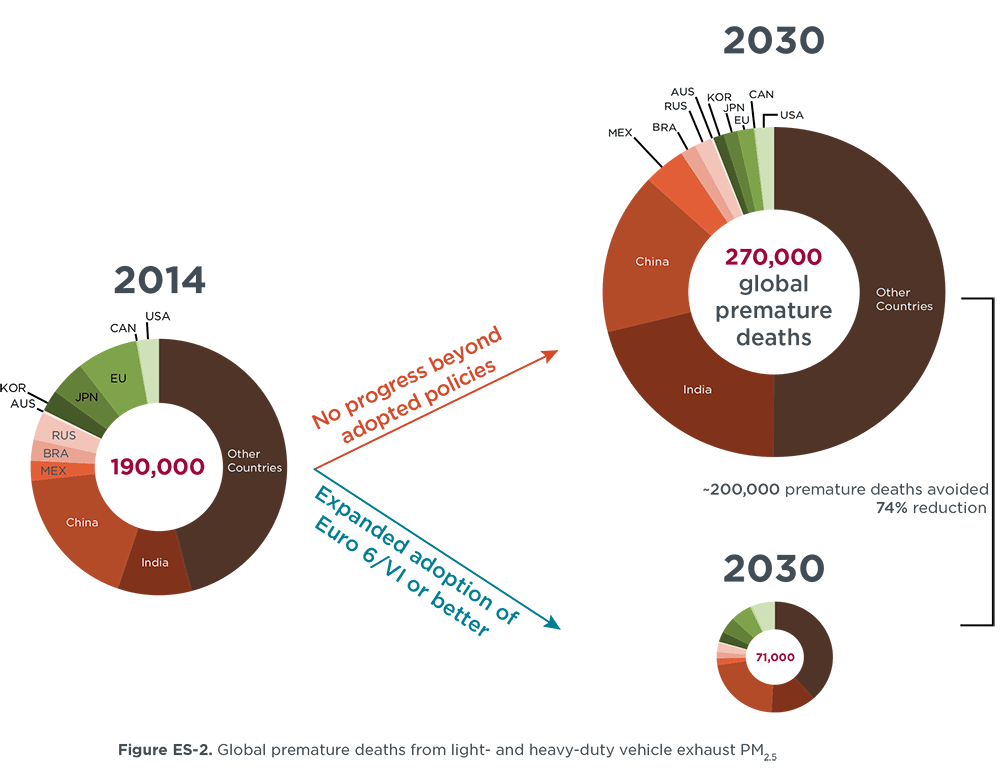Chart of the day: Implementing world-class vehicle emissions standards would reduce transport air pollution-related mortality from approximately 270,000 deaths to 71,000 deaths in 2030 globally
This chart comes from a report titled “The state of clean transport policy: A 2014 synthesis of vehicle and fuel policy developments” published by the International Council on Clean Transportation.
Air-pollutant emissions and public health
Exposure to outdoor air pollution resulted in 3.2 million early deaths worldwide in 2010 and ranks among the top ten health risks. Motorized transport is a major contributor to outdoor air pollution, particularly near major roadways and in urban areas with a high concentration of vehicle activity. The vast majority of health impacts from vehicle activity occur in India, China, Brazil, Mexico, and the countries in the Asia-Pacific region, Latin America, the Middle East, and Africa. Implementing world-class vehicle emissions standards would reduce transport air pollution-related mortality from approximately 270,000 deaths to 71,000 deaths in 2030 globally, with benefits that are greatly concentrated in major cities. These estimates are limited strictly to exhaust emissions of fine particulate matter (PM2.5) from light- and heavy-duty on-road vehicles in urban areas and thus represent a conservative estimate of health impacts from transport.
This report summarizes advances in national and international regulations intended to reduce energy use, mitigate climate change, and control air pollution from motor vehicles and fuels across eleven major vehicle markets from January 2013 through August 2014. These eleven vehicle markets—China, the U.S., the European Union, Japan, Brazil, India, Russia, Canada, South Korea, Australia, and Mexico—represented 85% of total vehicle sales in 2013. Click here to access the report and the presser.

